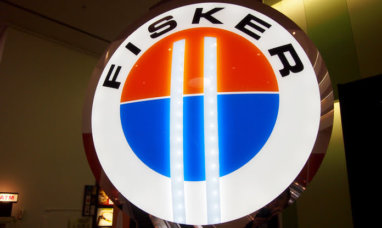My previous article comparing AT&T Inc. (NYSE:T) and Verizon Communications Inc. (NYSE:VZ) was co-produced with Sensor Unlimited after their Q1 financial announcements in May. (“ER”). That essay focuses on the implications of T’s spinoff, namely on its leverage and dividend safety.
With both companies’ Q2 earnings now available, I wanted to move the focus of this essay and consider the likelihood of a dividend decrease. I’m guessing most of you have already digested your ERs by now. Simply put, they are not the types of optimistic ERs that investors prefer. T upset the market by decreasing its free cash flow expectation for 2022 from $16 billion to $14 billion. VZ slightly missed profit forecasts and reduced its guidance. The present forecast forecasts no increase or even a reduction in both lines. The market reacted with a significant drop in stock prices.
Worryingly, T’s free cash flow (“FCF”) in the first half of 2022 was insufficient to meet its dividends. Neither would its forecasted free cash flow in 2022. Many investors, like this author, are lured to telecommunications stocks because of the high dividend yields.
AT&T and Verizon Q2: cash flow in focus
Both firms reported greater CAPEX and decreased operating cash flow. In VZ’s scenario, operating cash flow fell to $17.7 billion in 1H 2022 from $20.4 billion in 1H 2021. At the same time, its CAPEX expenditures climbed by $1.8 billion, resulting in a $4.5 billion decline in free cash flow. These adjustments are being driven by several issues, as discussed below by VZ’s CFO Matt Ellis (abridged and emphases added by me):
…cash flow from operating activities was $17.7 billion in the first half of 2022, down from $20.4 billion the previous year. The decrease was mostly due to working capital impacts from greater device activations. It increased inventory levels as part of our existing supply chain management. Capital spending for the first half of the year was $10.5 billion, a $1.8 billion increase over the previous year, driven by $2.8 billion in C-Band spending.
For the first half of the year, the net outcome of cash flow from operations and capital spending is $7.2 billion in free cash flow. T’s image is similar but slightly worse. In VZ’s example, its FCF comfortably covers its dividends ($5.4B in 1H 2022). However, T’s FCF fell from $5.2 billion in Q1 to $1.4 billion this quarter. Worryingly, the FCF is insufficient to fund its dividends, as discussed more below.
T vs VZ: dividend safety
Both T and VZ have done a good job of managing their dividend payout as long-term dividend payers. T’s and VZ’s long-term average cash payout percentages have been the same: 31 percent for T and 30 percent for VZ. Despite these difficulties, VZ’s current payout percentages are still lower than its historical average. However, T’s current payout ratios are approaching 40%, which is significantly higher than its historical average.
AT&T vs Verizon: 2H 2002 outlook
Looking ahead, VZ and T are expected to have flat or declining top and bottom lines in 2022. While their CAPEX expenses will remain high, resulting in strained cash flow. VZ anticipates a flat to 1% decline in revenues and a flat to 1.5 percent decline in EBITDA profitability. EPS expectation is also reduced by $0.3. Still, CAPEX guidance remains at $16.5B to $17.5B, with a strong emphasis on C-band investment. As the second chart below shows, the image of T is pretty similar. And again, the significant distinction is that T’s free cash flow forecast of $14 billion will most likely be insufficient to support its dividends.
Despite these short-term challenges, I see no reason for long-term investors to be concerned. The telecommunications industry is notorious for its high CAPEX investment and protracted asset cycle. And I completely agree with the following statement from Verizon CFO Matt Ellis (abridged and emphases added by me).
We are reiterating previous guidance for CapEx of $16.5 billion to $17.5 billion for business-as-usual capital and $5 billion to $6 billion for C-Band-related spending. Finally, we are confident in our approach. We feel that our assets position us well for long-term shareholder value generation.
Final thoughts and other risks
VZ and T both posted dismal Q2 earnings. Because of lower operating revenue and greater CAPEX expenses, cash flow is constrained. These challenges are projected to linger for the rest of 2022, if not beyond. As a result, dividend safety for both has decreased, particularly in the case of T. T’s dividend cushion ratio has decreased drastically from a healthy level of 1.98 in Q1 2022 to the current level of 1.39, which is not only considerably below its historical average but also approaching the threshold. VZ’s cushion ratio decreased as well, albeit considerably lower. Its present level of 1.85 is close to its historical average and well above the threshold.
Despite these short-term concerns, I see no reason for long-term investors (especially VZ investors) to be concerned. To put it mildly, high CAPEX investment IS the key to telecommunications’ moat. The primary reason I am driven to this sector is not its dividends but rather its long asset life cycle.
Finally, there are hazards. Aside from the danger of a dividend decrease, there is also the chance that their CAPEX projects would go over budget. Because of the extended lifecycle of their assets, along with recent price increases and workforce constraints, their CAPEX may surpass management guidance. The following Q&A conversation during T’s Q2 ER clearly illustrates the issue (abridged and emphases added by me). It is also applicable to VZ.
Featured Image: Megapixl © F11photo

















